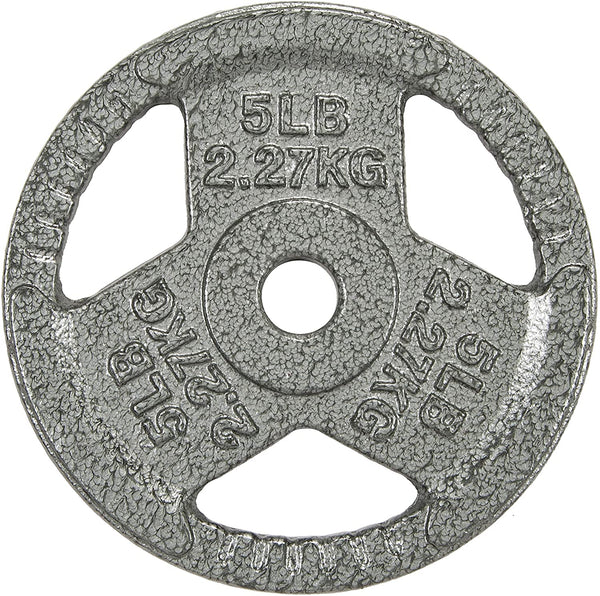Your Cart is Empty
August 02, 2023 3 min read
Weight plates are a staple piece of equipment in any weight training facility. They come in all shapes and sizes, ranging from traditional iron plates to modern-day rubber-coated designs. With the right use, they can help you build strength, tone muscle, and improve your overall fitness level.
Shop The Collection: Weight PlatesWeight plates offer many advantages over free weights, such as being easier on joints, providing more even loading for exercises, and allowing for greater range of motion. As with any piece of fitness equipment, it's important to understand how to use them safely and effectively. Here are some essential tips for using standard weight plates.
 Shop The Gear: MAGMA Standard 1-inch Grip Plates, from $4.99 USD
Shop The Gear: MAGMA Standard 1-inch Grip Plates, from $4.99 USD
Safety should always be your first priority when using weight plates. Before beginning a workout, make sure you know the proper form for each exercise. This includes keeping your back straight, engaging your core muscles, and avoiding jerking motions or pushing yourself beyond your limits.
Additionally, never attempt to lift more than you can handle and be sure to use a spotter if you’re lifting heavy weights. Be mindful of your environment and the people around you. Make sure the area is free of clutter and any potential hazards that could cause an injury.
The type of weight plate you use will depend on your fitness goals and the exercises you plan to perform. Generally speaking, most people will want to start with lighter weights and work their way up to heavier ones as they progress. Iron plates are often preferred by those looking to increase their strength, while rubber-coated plates are better suited for toning and endurance workouts.
It's also important to consider the size and shape of the plates when making your selection. Larger plates are typically more stable, but may not be suitable for certain exercises. On the other hand, smaller plates can be easier to grip and manipulate, but may not provide enough resistance to properly challenge your muscles.
Weight plates can take up a lot of room, so it's important to have a designated storage solution to keep them organized and accessible. A good rule of thumb is to hang the heaviest plates at the bottom and the lighter plates at the top. This makes it easier to identify which plates you need for a particular exercise and prevents issues like plates slipping or falling off the rack.
If you don't have a dedicated rack, you can also store the plates in plastic containers or drawers. However, this method is less efficient since you'll need to open the container each time you want to use a different weight. Additionally, this type of storage isn't as safe as having the plates securely fastened to a rack.
When performing exercises with weight plates, it's important to maintain proper form and technique. Start with a manageable weight and increase it gradually over time as you become stronger. Focus on each rep and make sure you're engaging the target muscles throughout the entire movement.
It's also important to use the correct grip when lifting weight plates. For example, when doing bicep curls, use a palms-up grip to ensure maximum control and avoid any unnecessary straining of the wrist joints. When it comes to squats, deadlifts, and overhead presses, using a neutral grip (palms facing each other) is ideal.
Weight plates are an excellent way to strengthen and tone your muscles, provided you use them correctly. By following these essential tips for using standard weight plates, you can ensure your safety and maximize the effectiveness of your workouts. Remember to choose the right weight for your level of fitness and always maintain proper form when handling the plates.
Shipping Protection gives you peace of mind while saving you time and money.
Shipping Protection provides coverage for eligible orders that are lost or damaged in transit, or stolen after delivery has been confirmed by the carrier. MAGMA Fitness, through its partners, administers the protection program and may receive compensation for these services. Coverage is subject to the terms, conditions, and exclusions outlined in our Shipping Protection Terms & Conditions.